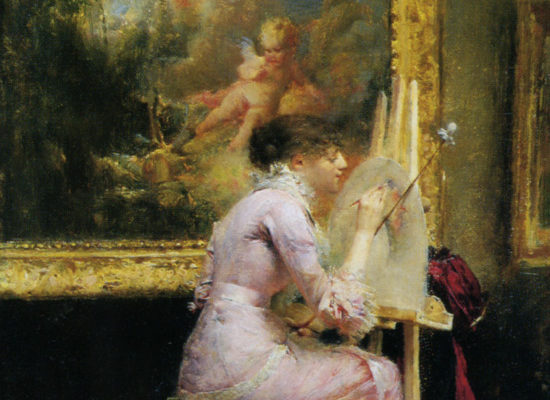Gurdjieff On Art
There is an interesting passage about art that I wish to share here, from the book In Search of the Miraculous. The book is written by Ouspensky but it mostly consists of transcripts from Gurdjieff talks. Gurdjieff was a mystic seeker who found esoteric teachings in the late 19th century. What follows is his take on art from psychological point of view. I do not completely agree with him on some things he say. I believe that sometimes an artist, accidentally or otherwise, can tap to a higher source which can help them create an objective piece of art, even if the artist himself is of the lower level of the being. Nevertheless, there are many interesting things in the following excerpt worth sharing, so here it goes:
“At the moment it is not clear to you that people living on the earth can belong to very different levels, although in appearance they look exactly the same. Just as there are very different levels of men, so there are different levels of art. Only you do not realize at present that the difference between these levels is far greater than you might suppose. You take different things on one level, far too near one another, and you think these different levels are accesible to you.
“I do not call art all that you call art, which is simply mechanical reproduction, imitation of nature or other people, or simply fantasy, or an attempt to be original. Real art is something quite different. Among works of art, especially works of ancient art, you meet with many things you cannot explain and which contain a certain something you do not feel in modern works of art. But as you do not realize what this difference is you very soon forget it and continue to take everything as one kind of art. And yet there is an enormous difference between your art and the art of which I speak. In your art everything is subjective – the artist’s perception of this or that sensation; the forms in which he tries to express his sensations and the perception of these forms by other people. In one and the same phenomenon one artist may feel one thing and another artist quite a different thing. One and the same sunset may evoke a feeling of joy in one artist and sadness in another. Two artists may strive to express exactly the same perceptions by entirely different methods, in different forms; or entirely different perceptions in the same form – according to how they were taught, or contrary to it. And the spectators, listeners, or readers will perceive, not what the artist wished to convey or what he felt, but what the forms in which he expresses his sensations will make them feel by association. Everything is subjective and everything is accidental, that is to say, based on accidental associations – the impression of the artist and his creation, the perceptions of the spectators, listeners, or readers.
“In real art there is nothing accidental. It is mathematics. Everything in it can be calculated, everything can be known beforehand. The artist knows and understands what he wants to convey and his work cannot produce one impression on one man and another impression on another, presuming, of course, people on one level. It will always, and with mathematical certainty, produce one and the same impression.
“At the same time the same work of art will produce different impressions on people of different levels. And people of lower levels will never receive from it what people of higher levels receive. This is real, objective art. Imagine some scientific work – a book on astronomy or chemistry. It is impossible that one person should understand it one way and another in another way. Everyone who is sufficiently prepared and who is able to read this book will understand what the author means, and precisely as the author means it. An objective work of art is just such a book, except that it affects the emotional and not only the intelectual side of man.
“Do such work of objective art exist at the present day?“ I asked.
“Of course they exist,“ answered G. “The great Sphinx in Egypt is such a work of art, as well as some historically known works of architecture, certain statues of gods, and many other things. There are figures of gods and of various mythological beings that can be read like books, only not with the mind but with the emotions, provided they are sufficiently developed. In the course of our travels in Central Asia we found, in the desert at the foot of the Hindu Kush, a strange figure which we thought at first was some ancient god or devil. At first it produced upon us simply the impression of being a curiosity. But after a while we began to feel that this figure contained many things, a big, complete, and complex system of cosmology. And slowly, step by step, we began to decipher this system. It was in the body of the figure, in its legs, in its arms, in its head, in its eyes, in its ears, everywhere. In the whole statue there was nothing accidental, nothing without meaning. And gradually we understood the aim of the people who built this statue. We began to feel their thoughts, their feelings. Some of us thought that we saw their faces, heard their voices. At all events, we grasped the meaning of what they wanted to convey to us across thousands of years, and not only the meaning, but all the feelings and the emotions connected with it as well. That indeed was art.“


Leave a Reply